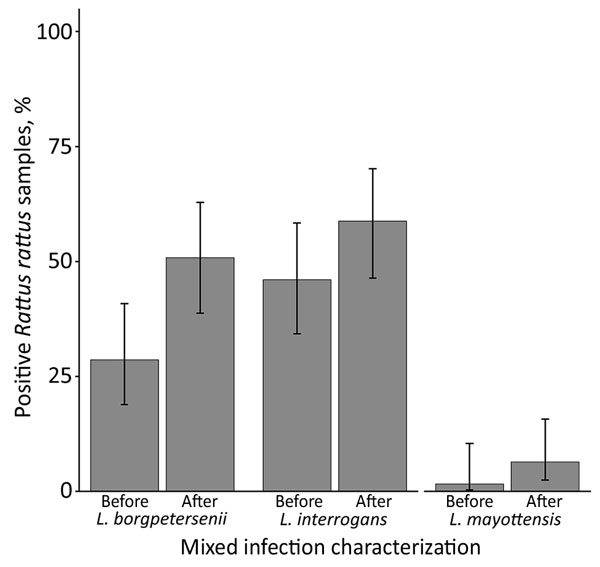Volume 24, Number 6—June 2018
Dispatch
Mixed Leptospira Infections in a Diverse Reservoir Host Community, Madagascar, 2013–2015
Figure

Figure. Proportion of Leptospira-positive Rattus rattus rat samples (n = 63) infected with L. borgpetersenii, L. interrogans, or L. mayottensis before and after characterizing mixed infections, Madagascar, 2013–2015. We initially genotyped R. rattus rat samples positive for Leptospira 16S rRNA by sequencing ≈300 bp of the lfb1 gene using standard primers and thermal profile (6). To characterize mixed infections, we used forward primers targeting the lfb1 locus of the different Leptospira species and the standard reverse primer and thermal profile. Mixed infections result in the sum of proportions exceeding 100% after characterization. Error bars represent 95% CIs.
Page created: May 17, 2018
Page updated: May 17, 2018
Page reviewed: May 17, 2018
The conclusions, findings, and opinions expressed by authors contributing to this journal do not necessarily reflect the official position of the U.S. Department of Health and Human Services, the Public Health Service, the Centers for Disease Control and Prevention, or the authors' affiliated institutions. Use of trade names is for identification only and does not imply endorsement by any of the groups named above.